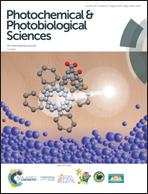Mechanism of the photorelease of alcohols from the 9-phenyl-9-tritylone protecting group†
Abstract
The 9-phenyl-9-tritylone photoremovable protecting group was examined using both photoproduct analysis and laser flash photolysis in order to determine the details of its mechanism of alcohol release. It is shown that formation of the tritylone anion radical is required for alcohol release. Attempts to trigger release via intramolecular photoinduced electron transfer were unsuccessful due to rapid back electron transfer reactions of the triplet diradical anion.



 Please wait while we load your content...
Please wait while we load your content...